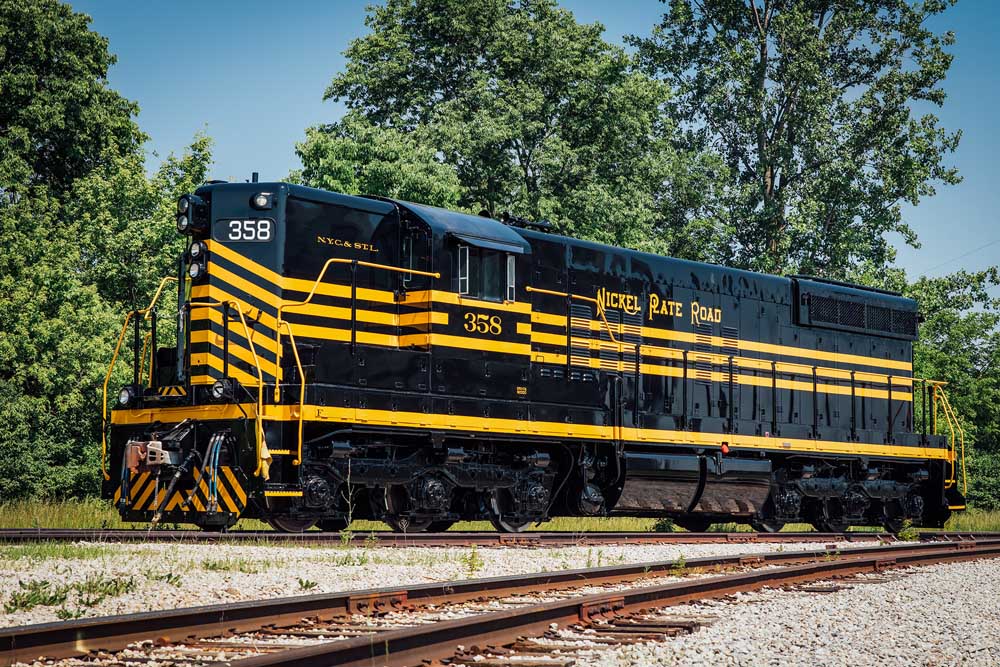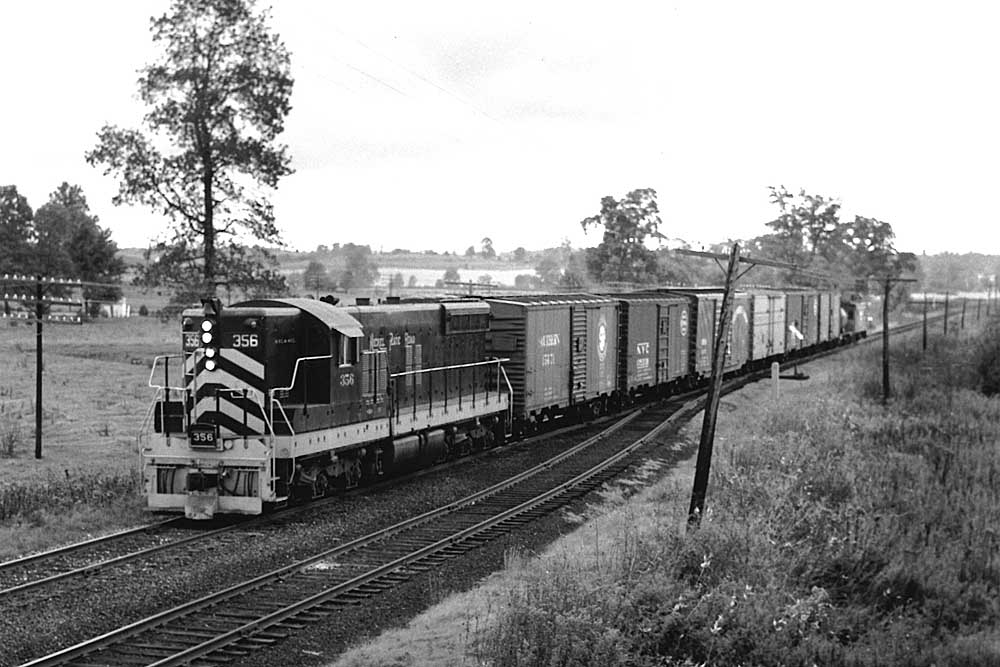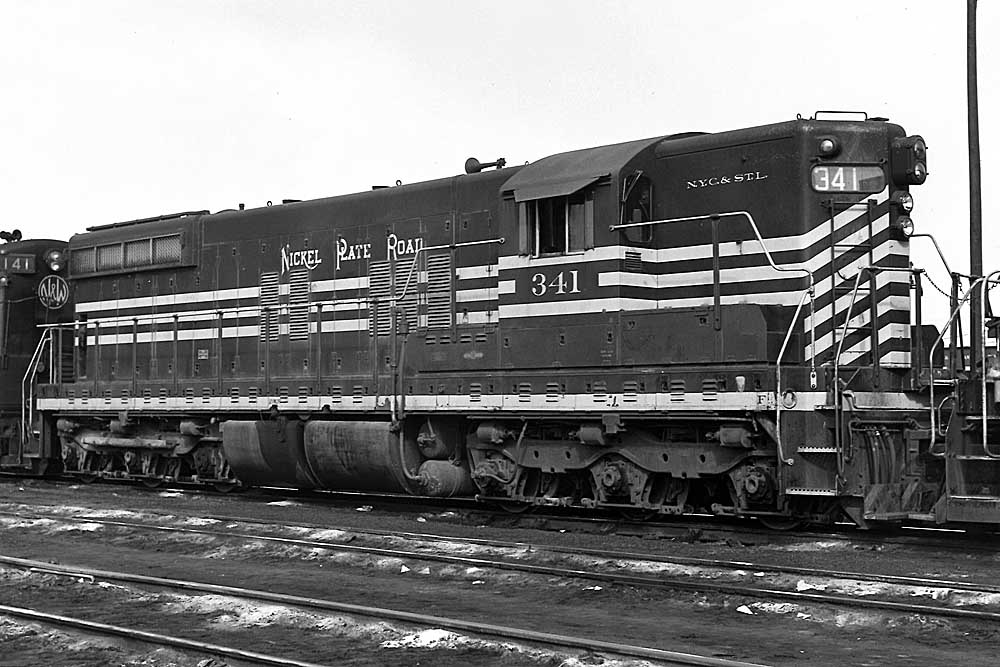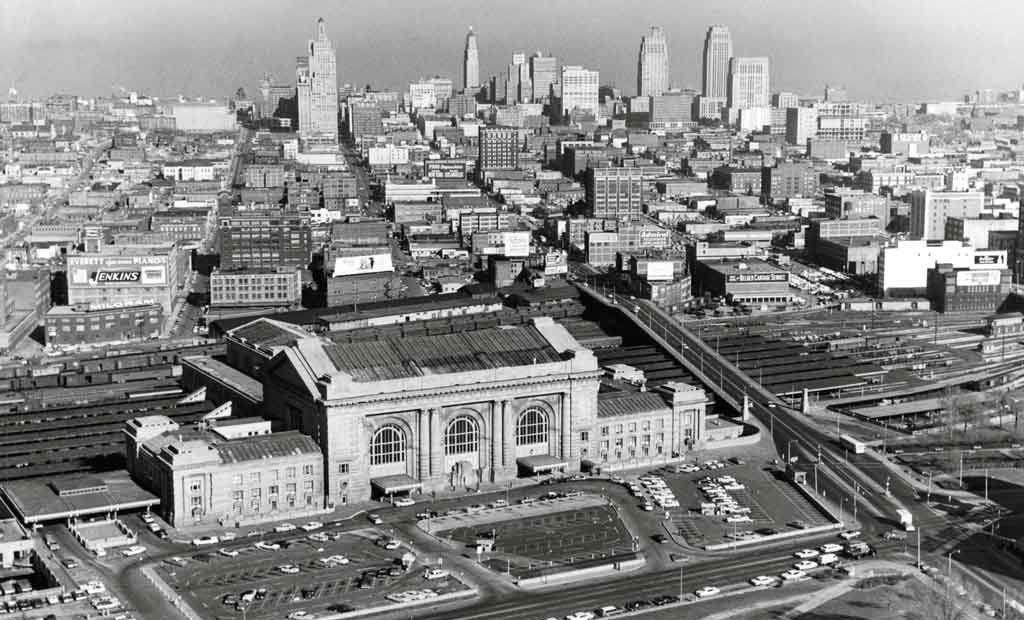
Just when you think recent progress in railroad preservation can’t get any better — I’m thinking here of everything from Big Boy to Reading & Northern 2102 to Silvis Shops to Michigan Central Station — along comes another milestone that, if not quite a blockbuster, is still remarkable. Especially if you’re interested in diesel heritage.
Consider the restoration of former Nickel Plate Road SD9 No. 358, donated by Norfolk Southern in 2010 to the Fort Wayne Railroad Historical Society and immaculately restored by volunteers and employees of locomotive manufacturer Progress Rail, the Caterpillar-owned company that carries on the work of GM’s Electro-Motive Division.
Just look at the photo here of the 358, fresh from the Progress Rail factory a couple of weeks ago in Muncie, Ind., gleaming like it’s ready for a car dealer’s showroom. Supported over the past six years by 12,000 volunteer hours and $100,000 in fundraising — including contributions from Progress Rail itself — the SD9 is said by FWRHS to be “90% there” and before long should join the organization’s other operating prize, Nickel Plate 2-8-4 No. 765. Apparently, some minor electrical work remains.
The revival of the 358 is significant on a number of counts. Restoration of any 66-year-old locomotive is a cause for celebration. The enthusiastic participation of a major manufacturer is amazing. And the SD9 will be a welcome addition to FWRHS’s operations of the 765 on its series of “Indiana Rail Experience” trips on portions of the 130-mile Indiana Northeastern Railroad.
What fascinates me most, though, is how the 358 harkens back to one of the most bittersweet moments in 1950s rail history: the Nickel Plate’s decision to give up on steam.
Let’s go back to the early Fifties, when Nickel Plate stood out among major railroads by bucking the relentless trend toward total dieselization. Despite going mostly diesel on its yard work and its modest fleet of passenger trains, Nickel Plate Road held onto its legendary fleet of 80 S-class Berkshires, ideally suited for the frequent, fast bridge-route service provided over its Chicago-Buffalo main line.
Steam seemed safe as late as Jan. 23, 1953, when Nickel Plate Road President Lynne L. White famously told the New York Society of Security Analysts that mainline steam wasn’t going anywhere. As he put it, Nickel Plate was willing to trade a bit of higher operating expense for better long-haul revenue. “There is little difference in operating costs,” White said. “Indeed, as recently as the summer of 1948 we ran some tests of our ‘S’ engines against (diesels) and you couldn’t put this piece of paper between the comparative costs.” The italics were White’s.

Steam fans everywhere breathed a short sigh of relief. The Berkshires were gallantly doing their job. Why change?
John A. Rehor, author of The Nickel Plate Story (Kalmbach, 1965), put the Berkshires’ performance in perspective: “A bridge route originating less than 40 percent of its traffic, operating in the most competitive transportation arena in the land, and boasting a freight train operation made to order for the diesel, the Nickel Plate resisted the Messiah to the very end. That it was able to do so and to please its stockholders in the process was largely due to that fact that it owned a magnificent breed of Berkshire freight engines.”
Alas, around the time of White’s speech, Nickel Plate was already buying hood units in quantity, mostly GP7s (139 between 1951 and 1957) but also Alco RS3s and RS11s. By early 1958, the verdict was in and only a handful of Berks were working the main line west of Fort Wayne. On July 2 came the last run for steam when 2-8-4 No. 746 ran a manifest train out of Bellevue to Conneaut, Ohio.
Memories are short in business, and White’s piece of paper separating steam costs from diesel obviously had gotten thicker.
For clarity’s sake, I should note that 358 and the other 19 SD9s the railroad bought in 1957 from EMD were not directly involved in putting the Berkshires out to pasture on the Nickel Plate main line. As C-C units, they were assigned mainly to service on the coal-hauling Wheeling & Lake Erie, which the Nickel Plate had begun leasing in 1949; the W&LE was merged along with Nickel Plate into Norfolk & Western in 1964.

But the SD9s wore the handsome black-and-yellow striped livery that signified Nickel Plate’s shift to diesels, and the 358 and its ilk did serve to end steam on the Wheeling district by 1957. They spent most of their early careers working around southeast Ohio out of the Pine Valley engine terminal, hauling coal up to the W&LE dock on Lake Erie at Huron. Later, the 358 went into more general yard and local service, reportedly around Bellevue. By the time it arrived in Fort Wayne, wearing the NS Thoroughbred paint scheme, it was looking a little beat up.
You wouldn’t know that now, judging by 358’s pristine appearance, or by the sound its original 567 power plant makes. Much of that is due to the dedication of the Progress Rail shop forces. “This project is a tribute to the design, durability, and quality of EMD locomotives,” said Progress Rail’s Art Erbacher, senior vice president. “Supporting an effort like this is part of what makes working in the rail industry so rewarding.”
As rewarding as seeing the 358 and the 765, running side by side soon, the victor and the vanquished, reminding us of those brief years when the Nickel Plate Road stuck with steam — until it didn’t.














As in the sports world it is the same in railroading. Once an officer like White gives steam a vote of confidence, it is in reality a death knell. The high cost of steam can’t compete against the efficiency of diesel-electric.
As a side note, I operated high nose SD40s, and thank God the high long noses of steam and early diesels were short-lived. Your visibility staring down a high long nose is limited.